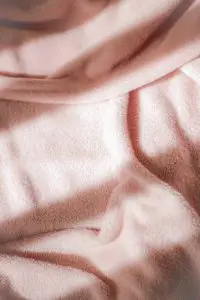When people began to form clothing to cover their nakedness, fashion began to evolve. Sometimes, fashion design greatly relies solely on coming up with any outfit. Other times, the ongoing atmosphere at that time influenced fashion designs. As a result, we can define fashion design as appealing or fashionable apparel. The history of fashion design is quite long, and the concept has also extended to other things, such as fashion accessories. These accessories include footwear, bags, and jewelry, among others.
Fashion design goes beyond simply designing clothing but is also accepted as a career worldwide. The history of fashion design dates as far back as Egypt and the Roman empire. At this time, people used clothes to identify the rich from the poor. However, the concept changes and evolves till we have the fashion design that we now know. This article seeks to discuss the history of fashion design and the then and now of fashion evolution.
History of Fashion Design – The Pre-1900s
After the exit of the Romans from England, the men and women began to wear belted tunics. This was during the reign of Anglo-Saxons. While the women’s tunic was ankle length with a shawl covering their head, the men wore the belted tunic as they deemed fit. However, people used the color of the clothing to differentiate the financial status of the people. These garments were also clear distinctions to identify the rich from the poor. While the rich men wore tunics sewn up on the sides, the poor wore their tunics open from hem to waist.
Then, after the Norman invasion, there was a slight change in the England fashion. The clothing was more close-fitting and elegant than before. However, by the 14th century, men and women began to wear different clothing styles against oversized tunics. Men wore tight-fitting hoses made of linen or wool and worn under short tunics. On the other hand, women wore close-fitting gowns with long sleeves and a big skirt. After a while, these tunics were replaced by short jackets with over-padded doublets.
1350 to Early 1800s
The history of fashion from 1350 to1520 is quite significant in fashion design history due to the high interest in fashion. Many people spent a lot of money on clothes to become members of the higher social class. The clothing style during this period only reflected the social standing of the person wearing the clothes. During these periods, no significant groundbreaking fashion change happened in people’s clothing styles.
The traditional look was gowns for ladies and trousers and jackets for men. This was an established dress code for the men and women in this period. However, between 1770 – 1789, Marie Antoinette, the queen of France, dictated the fashion for this period. Her dressmaker had a lot of influence during this time, and others had to follow suit. However, the French Revolution is a historical event that also influenced some upheavals in the history of fashion design.
From 1760 to 1840, textile manufacturing flourished so well in Britain. Before this time, every piece of clothing was handmade. Eventually, machines took over the production and tailoring of clothing. This invention ensured speed and less labor-intensive production of garments.
The History of Fashion Design – the late 1800s to Early 1900s
Before this time, people were not concerned with fashion design; people used clothes to identify people. For example, you could recognize who was rich or poor by their clothes. Not until 1826, when fashion began to take a different turn, and wearing clothes went beyond being identified. Most people believe that Charles Fredrick is the first-ever fashion designer globally. He started the fashion houses tradition and told his clients what kind of clothes would suit them.
Later on, several fashion design houses began to hire services for artists to create designs for garments. Clients would choose from the pattern presented to them and place an order if they find it appealing. At this time, fashion designers began to offer designs to clients instead of the earlier systems.
From the Mid-19th Century, Paris had become the world’s world fashion capital. Whatever fashion designers in Paris donned, the world copied and became a trend. Fashion designers would decorate evening dresses extravagantly with corsets that shaped the female body to regressive proportions. These clothes were expensive and elaborate. Women couldn’t dress themselves due to many layers and petticoats with tightly laced corsets under their gowns.
1910 in this history of fashion design signified a significant change in women’s dress silhouette as the S bend silhouette made the waist slimmer. Paul Poirot, the famous designer at this time, designed the first outfit that a woman could wear on her own. These clothes didn’t include a petticoat or a corset with orientalism such as turbans, kaftans, and pantaloons. Jeanne Paquin, Jacques Doucet, and Mariano Fortuny were the top designers at this time. After World War 1, elaborate dressing styles were suspended, and practical dresses kicked in.
1920 – 1930
The 1920s era is usually regarded as the golden era of French fashion. By this time, America was beginning to be prosperous and other clients aside from royalty and aristocrats emerged. However, elaborate dressing remains abandoned as people go for a kore sporty flat-chested look. Silhouette was adopted instead of a corset and became a norm in 1925. There was less waistline as flapper styles with zero-waist gained popularity during this period. Men’s wear also changed during this period. Men wore long stiff jackets with snickers and sweaters instead of tailcoats in the previous years. Coco Chanel, Jeanne Lavie, and Jean Patou were the top designers during this period.
1930 in the history of fashion design featured a re-emergence of ankle-length skirts and evening dresses. Also, at this time, women began to wear trousers as well. Elsa Schiaparelli, Madeleine Vioneet, and Main Rousseau Bocher were popular fashion designers during this period. In 1940, fashion design changed considerably as mass manufacturing of ready-to-wear clothes. The fashion design scene moved from Paris to London and then to New York after the world war. There were a lot of affordable handmade garments, and the ordinary person quickly adopted factory-made clothes. Christian Dior, Pierre Balmain, and Jacques Fath were the dominant fashion influences.
The History of Fashion Design – the mid-1900s
From 1950 to 1990, there was a high disposable income and a booming economy, and young people began to invest in fashion. In 1950, there was a significant change in men’s style with the introduction of Italian tailored clothing. Designers introduced this fashion design with single-breasted suits, narrow ties, tapered pants, and pointed shoes. However, in 1960, ready-to-wear clothing brands became significant players in the fashion industry. Unisex clothes and mini skirts were all the rage during this period. Also, brightly colored military jackets with tight trousers and pattered shirts were men’s favorite.
In 1970, flared trousers, hippy clothes with maxi skirts, hot pants, and wide-legged trousers were fashion preferences for many people. Then, in 1980, jeans became a norm in every wardrobe. Women wore tailored suits with padded shoulders to work. Celebrities such as Michael Johnson, Madonna, Boy George, and Princess Diana had a lot of influence on the fashion sensibilities of this period.
Finally, in the 1990s, there was a significant change in fashion, giving rise to a more simplistic fashion style. Fashion design became more popular, and globalization also led to international influences on fashion. There were a lot of fashion images all over the internet and television, leading to the adoption of global influences. Synthetic materials such as spandex, viscose, and lycra became popular fabrics for making top fashion design. Also, luxury brands such as Gucci, Prada, and Nike became very popular.
The History of Fashion – The 2000s Till Now
At the beginning of the 20th century, new fashion design development would first occur in Paris. Afterward, it would spread to the rest of the world. Unique fashion designs are first born in Paris, then find their way to other parts of the world. However, towards the mid-20th century, fashion designers would mass-produce fashion clothes. By the end of the 20th century, fashion design awareness among people increased speedily. People now select their clothes based on their style and comfort rather than relying on prevailing trends.
In this century, profit, economy, and comfort are essential elements that drive fashion. Now, brands are more prominent than designers and have a solid presence in major countries worldwide. However, these brands collaborate with some designers to become more significant. As of now, only countries drive the most fashion design ideas. These countries are America, Britain, France, Japan, and Italy. However, other countries look up to these countries for fashion design ideas and inspiration. Although, countries in Asia, Latin America, Africa, and the Middle East are stepping up their game in the fashion industry.
Modern Fashion Advancements
Different fashion design specializations are coming into the light in this century. There is a wide range of options for fashion designers to choose from and design. These options include women’s wear, lingerie, swimwear, children’s wear, men’s wear, bridal wear, footwear, handbags, etc. In the earlier years, fashion designers were more self-employed, but now they can find different career opportunities. The evolution of fashion design also gave rise to other related career options such as fashion journalists, fashion advisors, fashion photographers, etc.
Another noteworthy change in the history of fashion design is the use of computers and technology. There are several software packages designed to aid designers in fashion designing. These software packages also assist in the production of garments easily and speedily. As a result, fashion design has significantly evolved, and fashion designers are recognized in their countries and internationally. Fashion shows and participation have also gone up considerably recently. Fashion design is no longer simply creating a garment to cover our bodies, but it has become a world. It involves fashion, design, business, creativity, and technology.
Conclusion
Fashion design is the development of the intention and purpose behind creating garments, shoes, and accessories. Fashion design has dramatically evolved over the years, and fashion has gone beyond just covering one’s nakedness or social conformation. It has evolved from being just a social or cultural identity to reflecting a person’s individuality. Here is a detailed history of fashion design, and they have evolved over the years.







